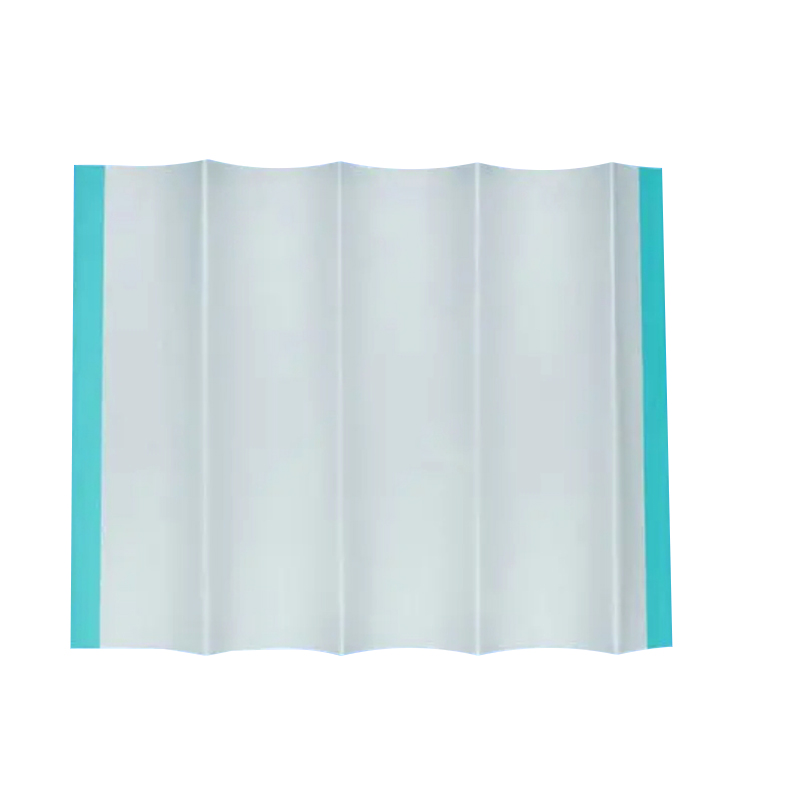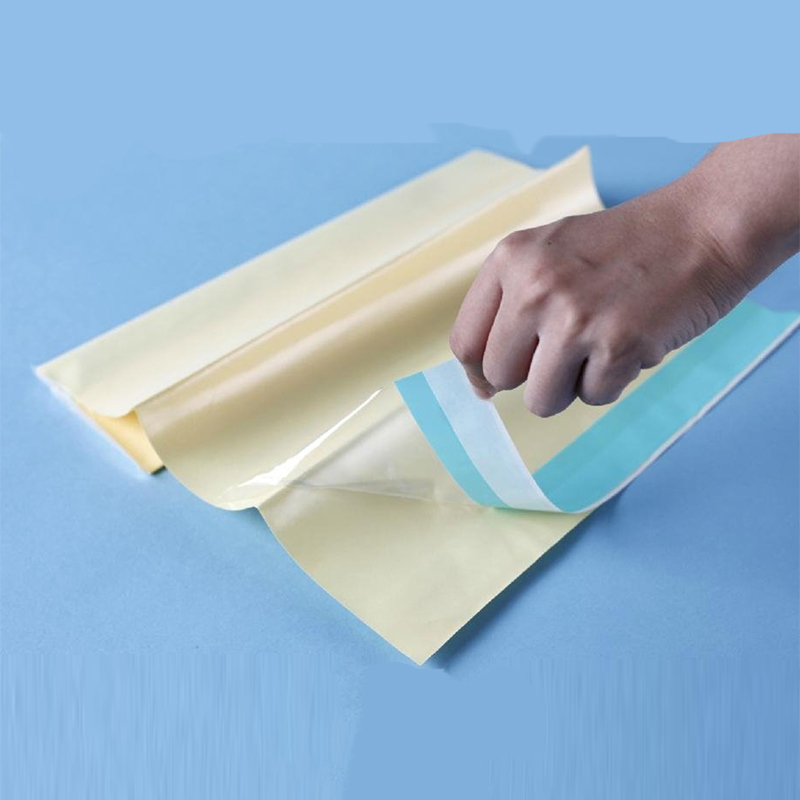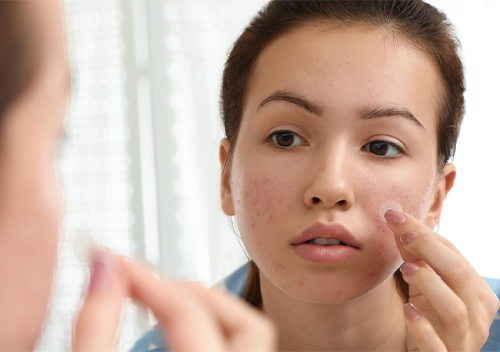What is the difference between surgical films and traditional dressings?
Surgical films have several significant advantages over traditional dressings, especially in terms of breathability, comfort and adaptability. Traditional wound dressings are usually made of gauze, cotton or other hygroscopic materials, and mainly rely on absorbing wound secretions to control moisture, but these dressings sometimes cause local moisture retention due to excessive hygroscopicity or thick materials, which can cause skin softening or promote bacterial growth, which may delay the healing process. Especially on large-area wounds or long-term fixed wounds, traditional dressings may not be ideal and are prone to airtightness, affecting the healing environment of the wound.
In contrast, surgical films are designed with thin films, and the materials are usually polyurethane, polyvinyl chloride and other materials with good breathability, elasticity and flexibility, which can achieve better air circulation and prevent moisture, dust and bacteria from entering the wound. This membrane is not only waterproof and antibacterial, but also ensures that the wound can breathe, which is crucial for cell regeneration and wound healing. Better breathability means that the wound is not easily surrounded by too much moisture, thereby reducing the risk of infection and accelerating healing.
The flexibility and elasticity of surgical films allow them to better adapt to the dynamic changes of the skin, especially in joints, bends, or areas with frequent activities. This design avoids the tightness and discomfort that traditional dressings may bring, and can even provide a comfortable wearing experience for a longer period of time. The transparent design of surgical films also allows doctors and caregivers to easily observe the healing of the wound without changing the dressing, thereby reducing irritation to the wound.
What is the difference between PU surgical films and medical surgical films?
Both PU surgical films and medical surgical film belong to the category of medical dressings. They differ in material, function, and application scenarios, and each has its own unique advantages and applicability. The following are their main differences:
Material difference: PU surgical films are made of polyurethane material, which is characterized by its excellent breathability, elasticity, and flexibility. Polyurethane surgical films are usually thin and light, and can provide waterproof and antibacterial protection while ensuring sufficient air circulation on the wound surface, keeping the skin dry and avoiding moisture accumulation. The flexibility of PU surgical films allows them to fit the skin better, especially for joints, active sports areas, or patients who need to wear them for a long time. Medical surgical films are generally made of stronger and more durable materials, such as polyvinyl chloride or other reinforced films, with high tensile strength and wear resistance. Although these membranes are also waterproof and antibacterial, due to the firmness of the material itself, medical surgical films are relatively thick and not as elastic as PU membranes.
Comfort and skin adaptability: One of the biggest advantages of PU surgical films is its comfort. Polyurethane materials are soft and have excellent elasticity, and can move naturally with the stretching and movement of the skin, so it will not cause excessive pressure or discomfort to the wound during the patient's activities. This membrane is particularly suitable for wound care that requires long-term wear, such as postoperative protection, trauma treatment, and chronic wound care. Medical surgical films usually have strong physical protection, but they may not be as flexible and comfortable as PU surgical films. Especially in areas with frequent activities, traditional medical surgical films may cause local discomfort or tightness due to high hardness or insufficient elasticity.
Use scenarios and applicability: PU surgical films are more suitable for the protection of trauma, burns, postoperative rehabilitation and other wounds that require long-term care. It is usually used in situations where the wound surface needs to be covered for a long time, such as postoperative wounds, chronic trauma, sports injuries, etc. This membrane has good air permeability and comfort, which can ensure that the wound surface remains moist and promotes healing. Medical surgical films are more commonly used for immediate protection after surgery, especially for the closure and protection of surgical wounds. Due to its stronger material, medical surgical films can provide stronger physical protection, prevent the invasion of external pollutants and bacteria, and ensure that the wound surface is effectively protected in the early stage after surgery. Medical surgical films are usually used for short-term use, especially in the operating room or in the postoperative recovery stage.
Functional comparison: Although PU surgical films and medical surgical films have basic functions such as waterproof, antibacterial, and breathable, their emphasis is slightly different. PU surgical films emphasize comfort and adaptability to long-term wear, and are suitable for wounds that require continuous protection. Medical surgical films emphasize the role of physical barriers, which can better resist external physical damage, and are suitable for early protection of wounds to prevent the invasion of external bacteria and pollutants.
How does surgical membrane promote wound healing?
Maintain a moist environment: A key feature of surgical films is the ability to maintain a moist environment for the wound. Studies have shown that a moist environment helps speed up wound healing and reduce cracking, scabs, and scar hyperplasia. A moist environment can promote the rapid growth of new cells, accelerate the repair process of the epidermis and dermis, and avoid excessive drying or scabs on the wound surface, which is crucial to reducing scar formation.
Reduce friction and external stimulation: Surgical films effectively reduce the time the wound is exposed to the external environment by forming a closed protective film, reducing the impact of external friction on the wound surface. Whether it is the friction of clothing or the collision of external objects, it may cause discomfort and pain in the wound, and may even cause secondary injury. The protective effect of surgical films reduces this external stimulation, thereby helping the wound to heal smoothly.
Prevent infection: Surgical films also have waterproof and antibacterial properties, effectively isolating the invasion of harmful external substances such as bacteria, dust, and pollutants. When wounds are exposed to the air, they are easily infected by bacteria, especially when the wound is in a moist environment, the risk of bacterial growth is greater. Surgical films can effectively prevent infection and protect wounds from pathogens through their airtightness and waterproof properties, thereby accelerating the healing process.
Easy to monitor wounds: Modern surgical films are usually transparent, which allows doctors or caregivers to easily observe the healing of wounds without frequently removing dressings. Traditional dressings need to be changed frequently, which not only increases the cost of care, but also may cause repeated exposure and excessive friction of the wound surface. The transparent design of surgical films allows medical staff to understand the condition of the wound in real time and adjust the treatment plan in time, thereby reducing irritation to the wound and ensuring a smoother healing process.
Reduce pain and itching: Because surgical films can effectively isolate external stimuli, they can also reduce pain and itching caused by wound exposure. Wounds are often accompanied by pain or itching during the healing process, especially when the wound is not effectively protected. These discomforts will interfere with the normal healing process. Surgical films provide comfortable protection through their soft and transparent characteristics, reduce unnecessary irritation of the wound, and relieve patients' pain and itching.
Accelerate cell regeneration and repair: A moist environment and appropriate temperature can promote the regeneration of cells around the wound, especially in terms of cell repair and collagen synthesis. By maintaining the appropriate moisture of the wound surface, surgical films create an environment that is conducive to cell regeneration, which helps accelerate tissue repair and reduce healing time. In addition, a moist environment can also reduce the formation of scar tissue, thereby helping the wound to achieve a better appearance after healing.
Prevent scar formation: By keeping the wound surface moist, surgical films can significantly reduce the risk of scar formation. Studies have shown that a moist environment helps prevent excessive hardening of the skin and reduces the formation of scar tissue. Surgical films prevent scar proliferation by reducing the occurrence of scabs on the wound, making the wound smoother and less marked after recovery.
Long-term protection effect: Surgical films usually have strong adhesion and durability, which means that they can provide long-term and stable protection during the wound healing process. Its strong adhesion makes the membrane layer not easy to fall off, and even if the patient is more active, the surgical membrane can continue to provide protection for the wound surface. This long-term protection effect allows patients to avoid frequent dressing changes, reducing the burden of care and ensuring that the wound surface is continuously protected during the most critical healing stage.












